At the end of the 2015-2016 academic year, Dr. Naik stepped down from roughly two decades of academic administration to return to the Department of Chemistry and Physics and resume the role of a full-time faculty member. Since then, a natural collaboration with Dr. Moehring that stretches across the School of Science with faculty and students has evolved. This collaboration is a wonderful example of tenants significant to what the school aims to accomplish: elevating the student experience and research innovation within the school. In this installment we take the time to get to know them and their work.
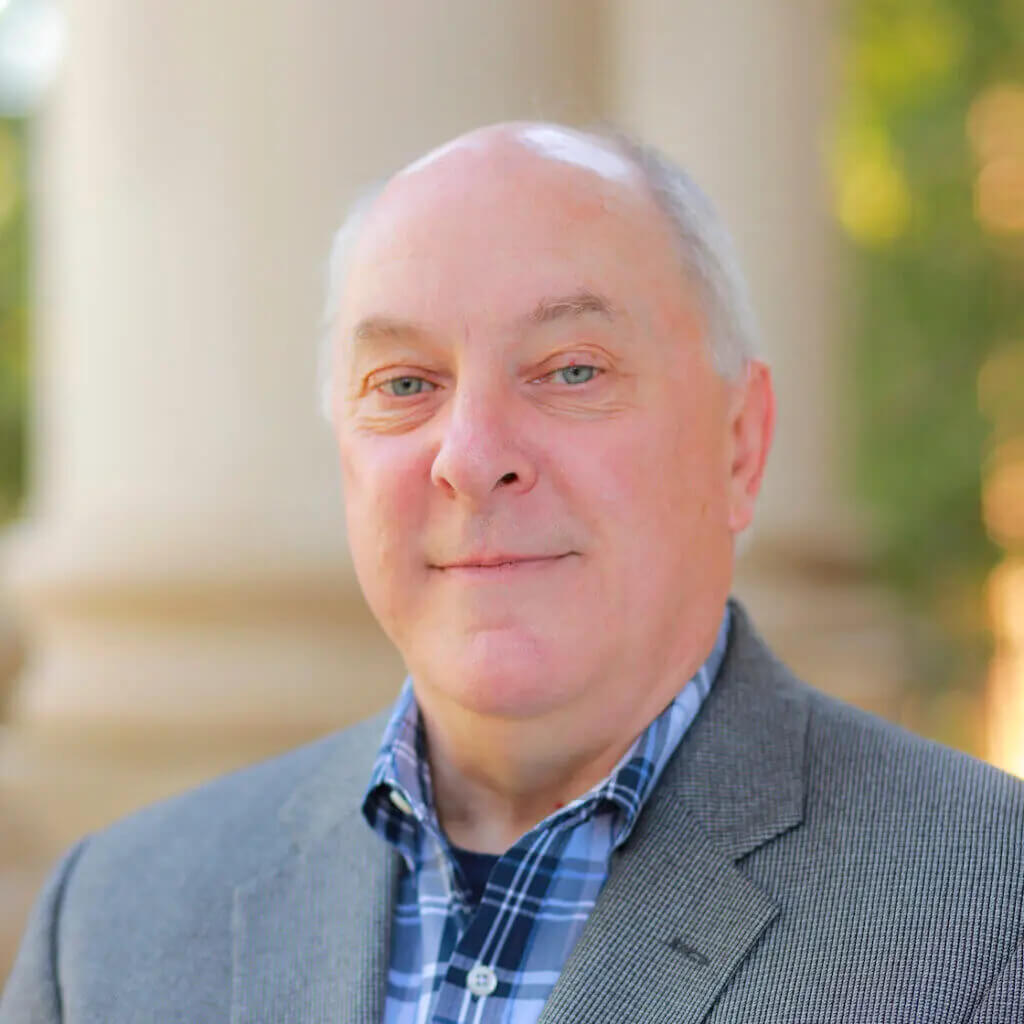
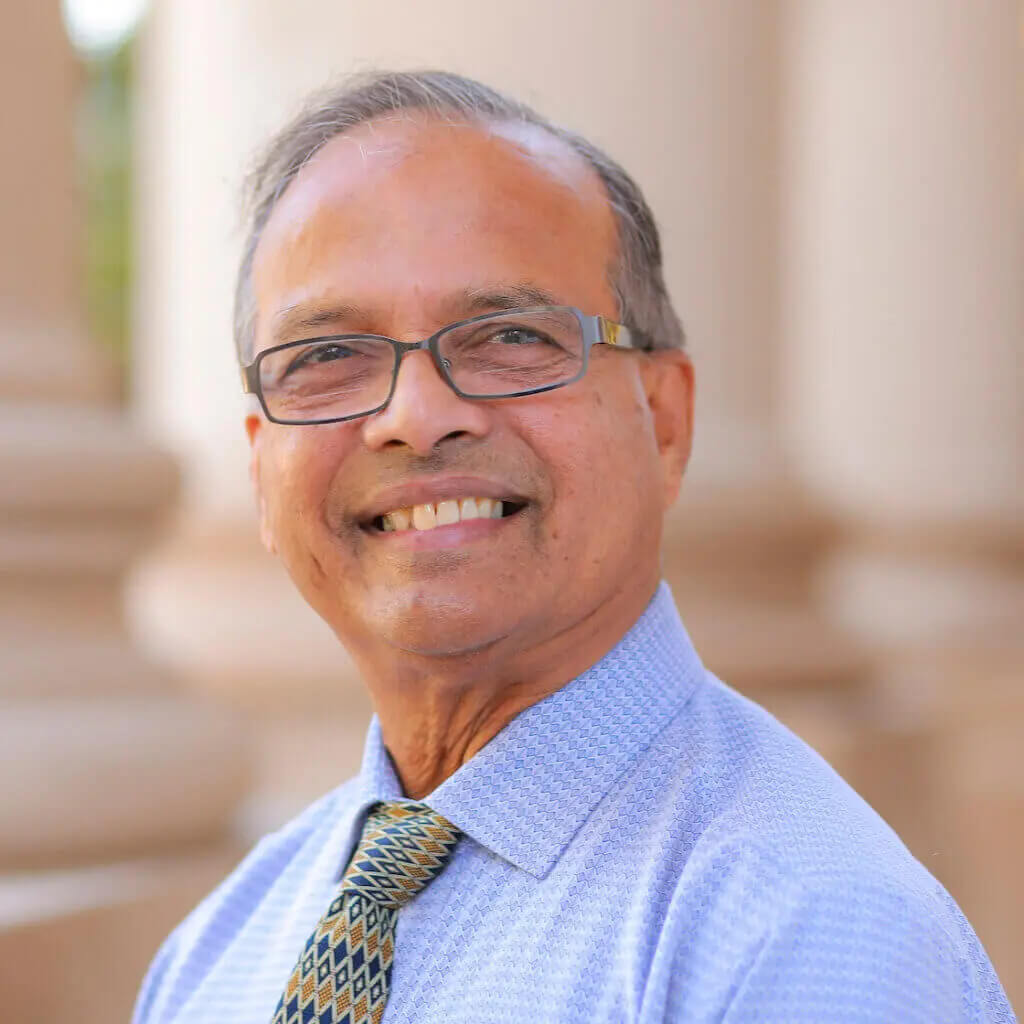
Q: Introduce yourselves.
A: Dr. Greg Moehring is in his 35th year as a chemistry faculty member and his 13th year at Monmouth. Dr. Moehring has a PhD in inorganic chemistry from Purdue University in Indiana. Dr. Moehring has been married for 31 years and has two sons.
Dr. Datta Naik is in his 51st year as a chemistry faculty member and his 47th year at Monmouth. Dr. Naik has a PhD in inorganic chemistry from University of Notre Dame in Indiana. Dr. Naik has been married for 52 years and has one daughter and one son.
Q: What do you like about being in the school of science? What brought you here?
A: Both of us appreciate the research support from the School of Science and the opportunity to work with a notable community of scholars. We also value the opportunity to work and publish with our undergraduate student research colleagues.
Q: Tell us about your research. What inspired you to be in a role that includes doing research?
A: A few years back, Dr. Naik noticed a research paper which described a molecule containing rhenium and an unusual component known as an alkylcarbonate group. The paper noted that the molecule adversely affected certain cancer cell lines (the molecule was cytotoxic). Both of us were intrigued by the alkylcarbonate group and were interested in exploring its chemistry. As our students began transformations of the alkylcarbonate-containing molecule into new molecules, Dr. Jeffrey Weisburg, from the Biology Department, offered to test these new molecules against oral cancer cells. Some of the new molecules significantly impact oral cancer cells while others only have moderate or zero impact on cancer cell viability. At the same time, Dr. Tom Emge, the X-ray crystallographer, Rutgers University Chemistry Department, was kind enough to determine the structure for one of our new molecules (Figure 1). Dr. Massimiliano Lamberto, in our Department of Chemistry and Physics, also provided us with a reactant that had been prepared in his laboratory. We were able to incorporate Dr. Lamberto’s reactant into a new rhenium-containing molecule and test it against oral cancer cells as well. Our work, which will be submitted for publication shortly, indicates that differences in the cytotoxic properties of the various new molecules are due to some process or processes which occurs after the molecules have entered the cancer cells.
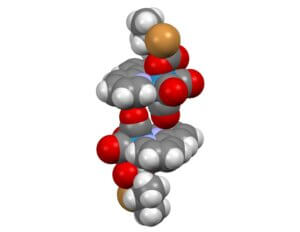
Towards a better understanding of how our molecules adversely impact cancer cells, we have developed new ways to make molecules related to our original set of molecules. One of the properties that we have incorporated into our next generation of molecules is the ability to emit visible light when exposed to ultraviolet light (Figure 2). Emission of light from the rhenium-containing molecules may allow us to identify where such molecules accumulate in a cell when the molecule has an adverse impact on that cell.
Both of us became involved with research because we enjoy intellectual challenges. It is a pleasure to apply our skills, knowledge and experience, along with reports from the scientific literature in efforts to better understand the world around us. It also gratifying to learn new things and develop new skills as we explore the world around us. It is stimulating to work with novice researchers and share our experiences in research with them.
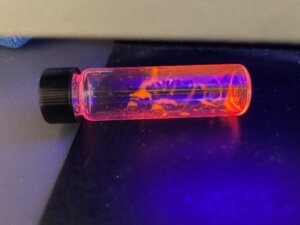
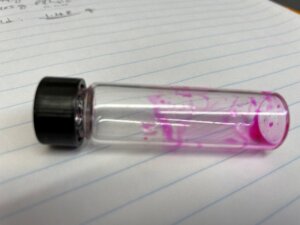
Q: Do you include collaborators including students?
A: While we have a broad set of skills and knowledge between us, we often rely on collaborators with different skill sets and knowledge in order to make progress in our research. We also make it a point to work on projects in which undergraduate students can contribute meaningfully to the project while developing or improving their skills. Some of the skills that students in our research group develop include inert atmosphere synthesis techniques, the measurement and interpretation of nuclear magnetic resonance (NMR) spectra, data analysis, and assorted other spectroscopic or electrochemical techniques.
Q: What are your research plans for the near future?
A: In the near future we would like to make further progress on our synthetic routes to potential cytotoxins. We are also looking to better understand what happens to the cytotoxic molecules after they enter cancer cells. Ultimately, we would like to use that progress to support a proposal for external support to continue this work.
Q: Do you have any advice for students that are interested in doing research?
A: Students who are interested in doing research should speak with faculty research mentors about their projects. (Faculty members love to talk about their research so you are not bothering them by asking.) Students should also talk with other students who are involved in a research project as well to get a different perspective. Find a mentor, a group, and a project that is a good fit for you and then make a commitment to the success of the project and the success of your colleagues.
